Models on Plaster
Roman Antiquity
3rd c. BC–4th c. AD
Roman art: Heroes from another world
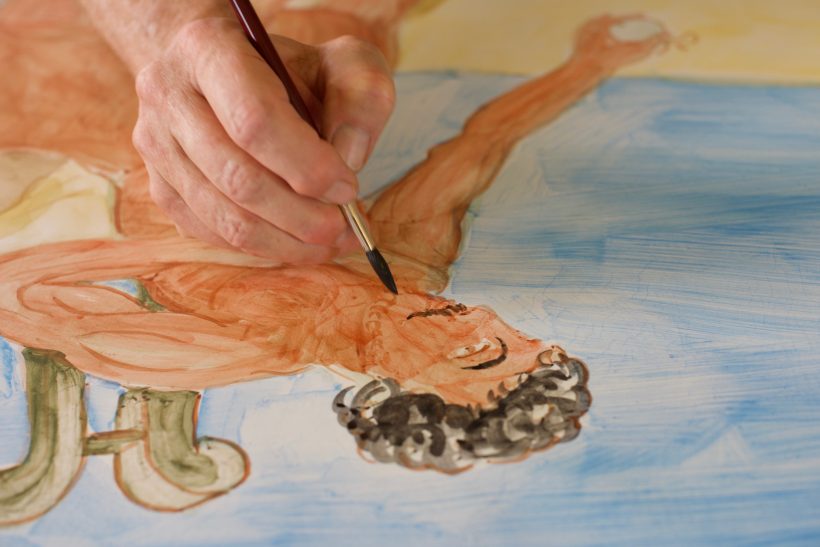
Wolfgang Beltracchi malt das Gesicht des Kentauren Chiron in den nassen Putz. Es entsteht ein Fresko in der Handschrift des 2. Jh. n. Chr.
Role-models become images
Achilles, the fearless demigod, presents his hunting catch to his teacher, the just centaur Chiron. In return, Chiron hands his pupil an apple as a symbol of immortality: “…and the boy already had the signs of defiance and zealous wildness on his forehead, but softened this expression with his innocent expression and his very friendly, gently smiling cheeks”. This is how Philostratus the Elder describes a painting in his renowned “Eikónes”. They are the first known image descriptions to convey philosophical teachings, even if they describe paintings which may only be a myth.
Philostratus tells of his visit to a wealthy friend near Naples and how he and this man’s son graze their fingers along 65 mythological motifs in a painting gallery. In doing so he construes Comus, tired after a grand celebration, Poseidon with the trident, or Apollo, frozen with fear after his fatal discus throw. By painting the education of Achilles, Wolfgang Beltracchi reverses the story and turns the description into a painting. In the style of antique frescoes, he illustrates the teaching and model functions of mythology which are still present for us today. We can see that even the ancient paintings were done in the tradition of cultural inheritance.
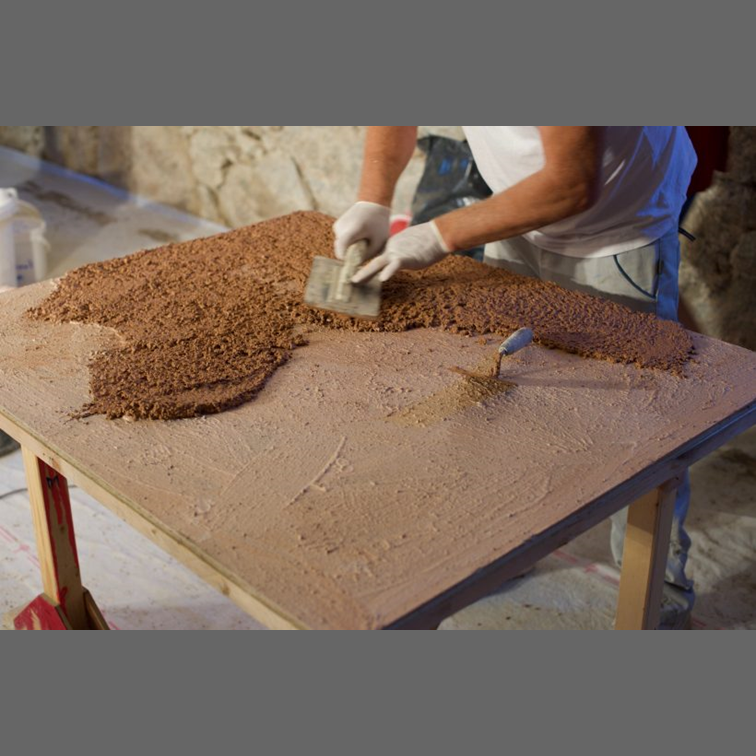
The fresco needs a painting base. A dry construction board is coated with primer and layers of lime mortar are then applied.
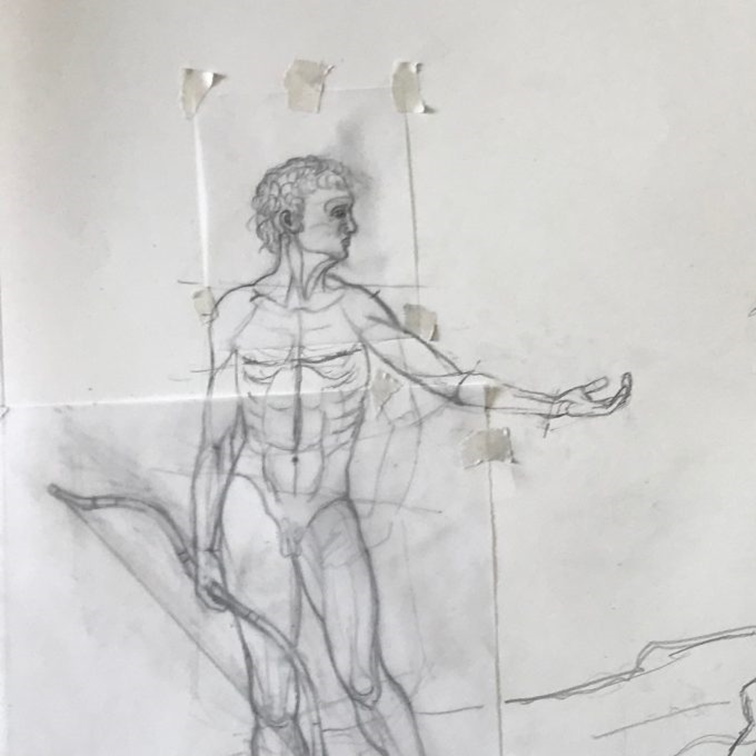
In a study, Wolfgang Beltracchi sketches the young Achilles in sections. As a symbolic pupil, he copies the moves of Commodus, the son of Marcus Aurelius. The “Philosopher” led a virtuous life and placed great importance on the appropriate education of his son.
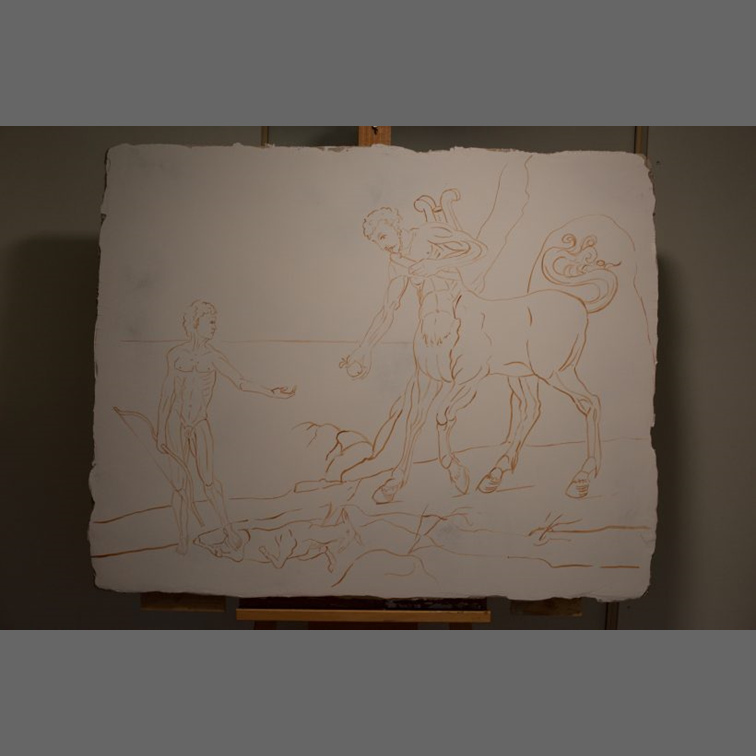
The underwriting of the depicted scene is already on the plaster: Achilles with his catch and his teacher, the half-man, half-horse centaur Chiron.
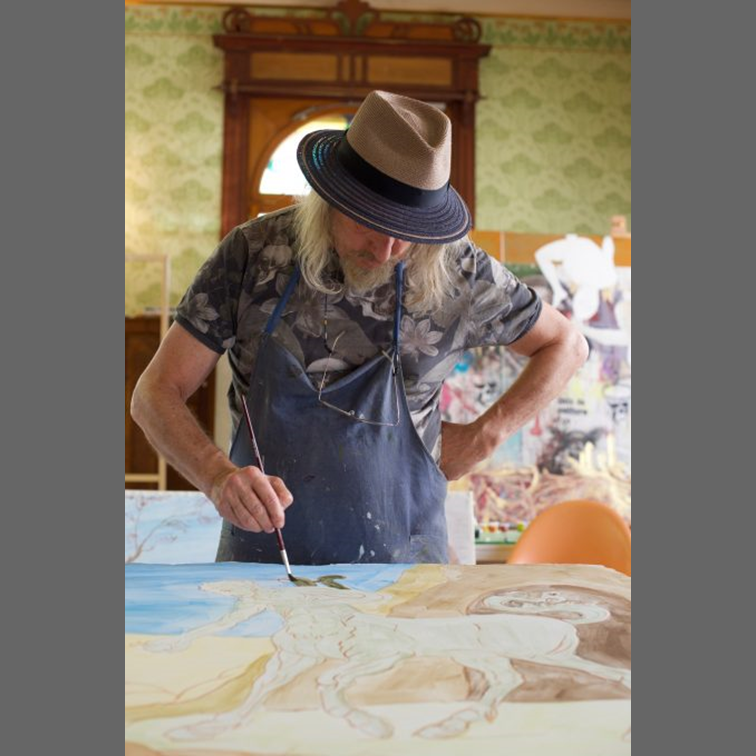
Now the artist must be quick. Beltracchi uses the ancient Buon Fresco technique. With this technique, the plaster must be wet until the very last brush stroke. Within a few short hours, the artist paints the picture on fresh plaster with pigments ground in travertine water.
Roman art
In ancient Rome, mural painting was in its heyday and the occupation “artist” was appropriately prestigious. But the names of the ancient Roman painters are hardly known today as they did not sign their works.
1. From art to advertising
In ancient Rome, paintings were both sacred and secular and were popularly used for decoration. While the depictions of mythological scenes found in the homes of this financially strong society exhibit the sophisticated techniques that were used, the drawings used for advertising purposes are quite simple. Brothel scenes or a fish in the cookshop – the main thing is that the message is clear.
2. In good old tradition
Die artistic motifs are often devoted to the gods and heroes from Greek mythology, something which shaped the education of the upper Roman classes.
3. What isn't real is painted
Columns, doors, marble slabs, or the imaginary view over the countryside and temples – the painters masterfully bring mock architecture to the walls and use every square centimeter to do so. Homes are thereby upgraded and underline the social status of their owners.
4. Image composition by the book
As a stylistic element, the architectural imitations are quite different when looked at in detail. However, the defining elements are always constructed according to the same pattern: a simply designed base, an elaborate middle section usually covered with paintings or ornamental panels, and an upper section with architectural elements.
5. Wall paintings become the trend
As the scolar Gaius Plinius Secundus in seiner »naturalis historia« 77 n. Christus vermerkte, gab es im alten Rom einen Trend von der Tafelmalerei hin zur Wandmalerei (Fresko). Bei der Tafelmalerei wurde meist mit in Wachs gebundenen Farbpigmenten (Enkaustik) oder mit Tempera auf Holz gemalt. Für die immer beliebteren Fresken trugen die Künstler in Kalksinterwasser gebundene Pigmente auf den frischen Putz auf.
Eras of art in the KAIROS project
Medieval art
Early Netherlandish painting
Italian Renaissance
Mannerism
Early Baroque
Rokoko